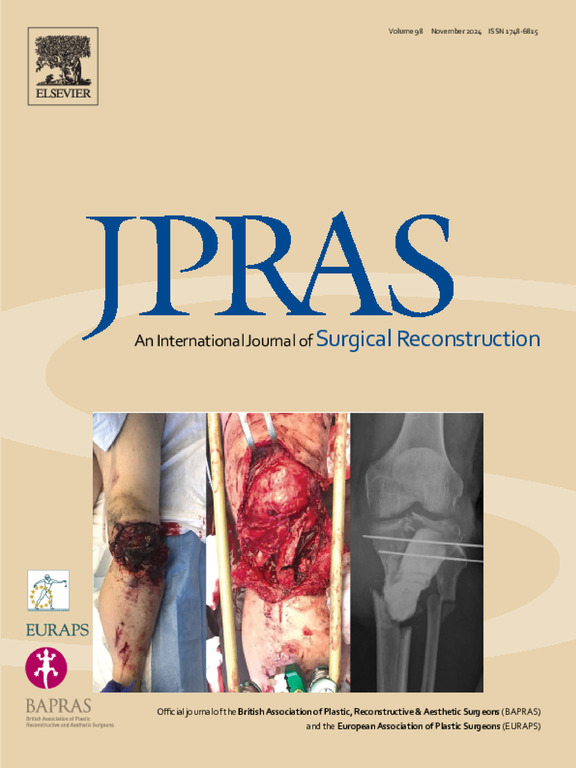Comprehensive smartphone-based 3D scanning framework for capturing the external ear
IF 2
3区 医学
Q2 SURGERY
Journal of Plastic Reconstructive and Aesthetic Surgery
Pub Date : 2025-06-24
DOI:10.1016/j.bjps.2025.06.011
引用次数: 0
Abstract
Congenital microtia manifests abnormalities in the external ear leading to potential adverse impacts on psychosocial health and hearing impairment. Three-dimensional (3D) technologies have demonstrated potential applications for personalised prosthesis fabrication; however, the large hardware costs limit their routine clinical use. Frugal 3D scan-model-print pipelines can disrupt traditional processes and increase accessibility. In this study, we aimed to further validate 3D photogrammetry using 3 different smartphone models. Both ears of 10 participants were scanned with 4 devices: Samsung Galaxy S8, Samsung Galaxy S9, Apple® iPhone 8S, and Artec Spider 3D scanner. Scan, processing times, accuracy, completeness, and repeatability of the smartphone models were analysed with no significant difference across all tested models (Accuracy: 1.1 ± 0.3 mm, Completeness: 81 ± 10%). This demonstrates a flexibility in capture device selection for smartphone photogrammetry, with the potential to broaden the translation of this frugal 3D scanning approach to personalised prosthesis production.
全面的基于智能手机的外耳三维扫描框架
先天性小耳症表现为外耳异常,导致对心理健康和听力障碍的潜在不利影响。三维(3D)技术已经证明了个性化假肢制造的潜在应用;然而,巨大的硬件成本限制了它们的常规临床应用。节俭的3D扫描模型打印管道可以破坏传统流程并增加可访问性。在这项研究中,我们旨在进一步验证3D摄影测量使用3种不同的智能手机模型。10名参与者的双耳扫描设备分别是:三星Galaxy S8、三星Galaxy S9、苹果®iPhone 8S和Artec Spider 3D扫描仪。对智能手机模型的扫描、处理时间、精度、完整性和可重复性进行分析,所有测试模型之间没有显著差异(精度:1.1±0.3 mm,完整性:81±10%)。这证明了智能手机摄影测量的捕获设备选择的灵活性,有可能扩大这种节俭的3D扫描方法到个性化假肢生产的翻译。
本文章由计算机程序翻译,如有差异,请以英文原文为准。
求助全文
约1分钟内获得全文
求助全文
来源期刊
CiteScore
3.10
自引率
11.10%
发文量
578
审稿时长
3.5 months
期刊介绍:
JPRAS An International Journal of Surgical Reconstruction is one of the world''s leading international journals, covering all the reconstructive and aesthetic aspects of plastic surgery.
The journal presents the latest surgical procedures with audit and outcome studies of new and established techniques in plastic surgery including: cleft lip and palate and other heads and neck surgery, hand surgery, lower limb trauma, burns, skin cancer, breast surgery and aesthetic surgery.

 求助内容:
求助内容: 应助结果提醒方式:
应助结果提醒方式:


